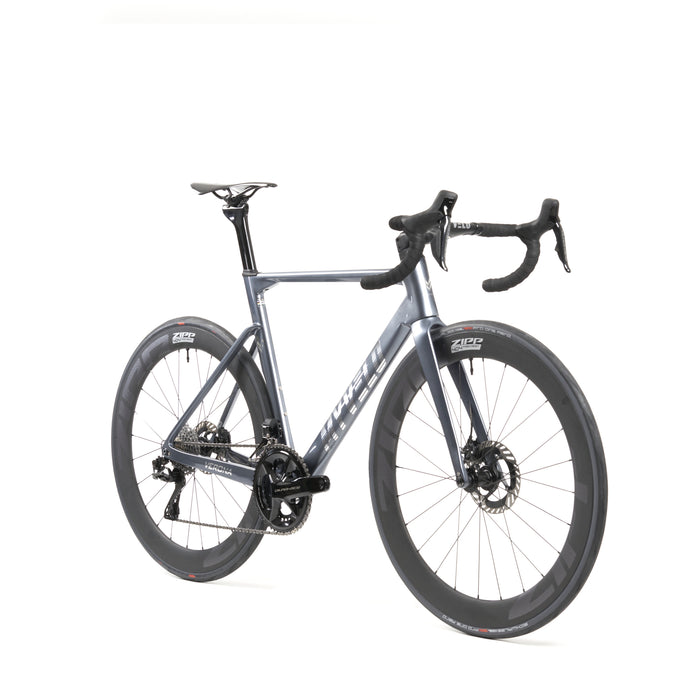
Verona road bike
incl. FREE shipping & free returns

Anyone who regularly rides a road bike knows: corners are more than just a change of direction. They require concentration, technique, and the right feel for speed and line. Especially for beginners, cornering can be a real challenge – whether on fast descents or in hectic city traffic.
Von Helena Burgardt |
3 minutes read time

In this article we will show you the most common beginner mistakes when cornering and how you can specifically avoid them in order to be safer and faster on the road.
Many beginners look directly in front of their front wheel or – even worse – at the obstacle they want to avoid (e.g. curb, manhole cover, oncoming traffic).
Eye tracking is key. You should look into and through the curve — ideally at the apex and then to the exit. This way, your brain recognizes the curve's course early on, and your body automatically steers in the right direction.
Many beginners approach corners too tightly, brake late, and then go too far to the outside. Or they cut the corner too sharply, endangering themselves and others.
Stick to the principle:
Outside – inside – outside.
This way, you can use the full width of the road (if permitted and safe), negotiate the curve smoothly, and stay on course in a controlled manner. Especially important on downhill sections: Always expect oncoming traffic!
You take the corner too fast and brake while leaning – this dramatically reduces the grip of the tires.
Braking occurs before the turn. By the time you approach the apex of the turn, you should already have adjusted your speed. During the turn itself, keep your hands off the brakes – unless it's an emergency.
Many beginners have too stiff upper bodies when cornering, sit upright or lean incorrectly to the side.
Stay relaxed. Your arms should be slightly bent, and your upper body should be low. This shifts your center of gravity downward, giving you more control. Lean into the turn with the bike; it's okay if your inner elbow points slightly downward.
Extra tip: Press down on the outer pedal with your weight – this increases stability when leaning.
You continue to pedal when cornering and hit the asphalt with your inside pedal – dangerous!
As you go through the turn, keep the inside pedal up (at 12 o'clock). The outside pedal points down—this is where you shift your weight (see above). This way, you avoid contact with the ground and stay balanced.
You're driving with too much tire pressure. While this reduces rolling resistance, it also reduces contact with the road—especially when cornering.
Adjust the tire pressure to your weight, tire width, and the surface. A little less pressure often means more grip in corners – without a significant penalty in straight-line travel. Modern road bike tires (25–28 mm) can sometimes tolerate 6–7 bar instead of the typical 8+ bar.
You underestimate the sharpness or length of the curve, come in too fast and have to correct in a panic – often with risky maneuvers.
Learn to read curves in good time. Pay attention to signs, shadows, the gradient of the road, and oncoming traffic. The better you judge the curve, the more relaxed and cleanly you can drive. It's better to enter a little slower – and exit with momentum.
You train exclusively on long tours and neglect technical units.
Plan targeted technical sessions – for example, in a quiet parking lot or on a bike path with lots of curves. Set up small slalom courses with bottles or cones. Practice braking before corners, steering, eye tracking, and weight shifting. Technical training isn't a luxury; it will save you nerves in tricky situations – and prevent falls.
Cornering isn't rocket science – but it does require patience, practice, and awareness. If you avoid the beginner mistakes mentioned here and regularly work on your technique, you'll quickly notice: You'll ride more safely, smoothly, and with more confidence. And the best part? A clean turn is simply fun.
Bonus tip: Have yourself filmed - If you want to show your progress, ask a friend to film you with their smartphone while cornering. This way, you can immediately see where there's still room for improvement – for example, in line selection, eye tracking, or posture.